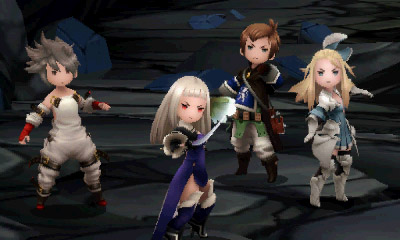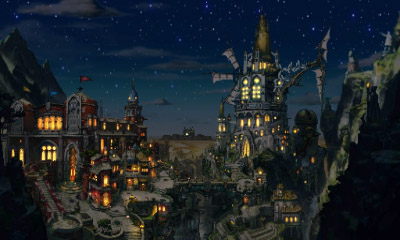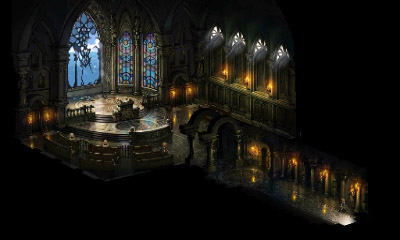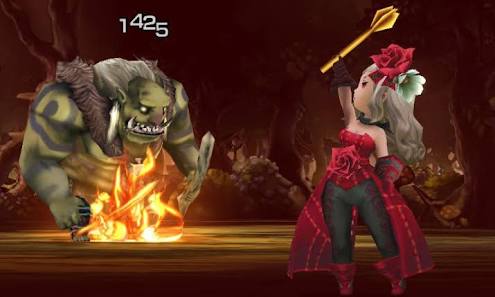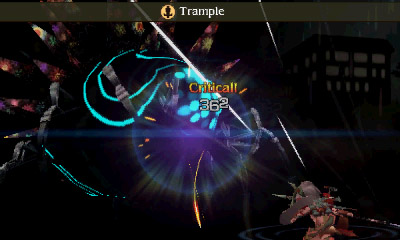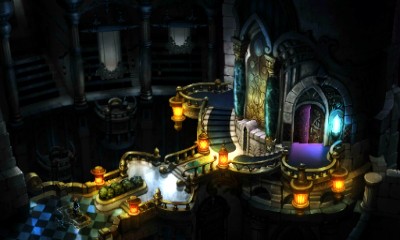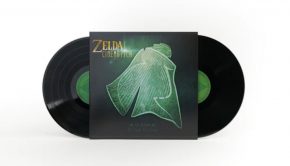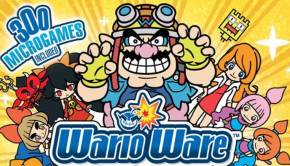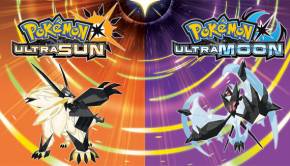Bravely Second: End Layer 3DS review
Summary: Bravely Second: End Layer is inextricably tied to its predecessor but still manages to be a fun, cute, old-school styled RPG.
4.3
Golden
Bravely Second feels like a drawn out finale. It opens with a decisive clash between characters that were totally unknown to me but distinct enough to suggest ‘the final boss’. Things never really escalate from there; a sense of tension remains, but it’s the prolonging, ‘your princess is in another castle’ kind of tension. Returning characters—playable and otherwise—drift into the narrative and reminisce about the events of the previous game, Bravely Default, while little of current consequence takes place. In spite of the fact that numerous new characters and locations exist in Bravely Second, it still feels like a victory lap of sorts, a tour of the old haunts and old faces before the actual climactic moments begin—even for a newcomer.
The world of Bravely Second is gorgeous, however. I am impressed at the sense of scale that each of the locations manages to achieve; even though the actual walkable terrain is not that extensive, the moment the camera pans out to reveal the full extent of each vista is legitimately impressive. The view through the broken window in the cathedral in Gathelatio is breathtaking. But one of the playable characters, Magnolia, captures the drawbacks of Bravely Second’s locations when she says that every nation in the world of Luxendarc is so unique; ‘No place is like any other!’
This is true of the characters also. Because each location and character strives for such stark distinction, each is reduced to a handful of readily visible traits or quirks. This isn’t so bad when it comes to locations, such as the Japanese-themed town renowned for its hot springs, because they serve mostly as backdrops. But for characters, it results in stilted, almost one-dimensional collections of tropes. One temporary party member, Nikolai, is a kind of ‘wise dad’ who repeats his important points for emphasis; unfortunately, the exaggeration of character traits means that Nikolai ends up repeating almost everything he ever says, which undermines any possible wit.
The main characters suffer from this also, but have the benefit of more screen-time and therefore comprise just enough varying tropes to give the semblance of a half-developed character. The writing is generally quite clever, even if the same repeated jokes become tired after repeated use. Protagonist Yew Geneolgia uses malapropisms—his ‘coup de gravy’—to keep him firmly within the lovably dorky hero category, and mysterious moon girl Magnolia Arch’s work as a Ba’al Buster—pronounced ball buster—reveals a low brow but still somewhat clever charm.
These criticism are made knowing full well that they are largely intentional; Bravely Default prided itself on a return to a sort of golden age of the Japanese roleplaying games and Bravely Second continues this: the characters are simplistic so that grand flourishes can be made without worrying about consistent characterisation or motivation.
Where Bravely Second has eschewed the traditional in favour of a more robust, contemporary approach is in the combat. Which seems strange—the turn-based battle systems are perhaps the most quintessential feature, and tweaking that would theoretically impact Bravely Second’s ability to feel ‘old-school’. But with the ability to set a list of auto-battle commands, to speed up random encounters, and to chain together encounters to receive bonus rewards, Bravely Second strips the tedium out of battles and makes them (simple yet) fun.
The job system is extensive enough to provide variety but concise enough to make mastering each job seem possible; with the ability to mix and match passive skills and command abilities, the potential combinations are plentiful. I never found that any particular class severely out- or under-performed any other, which might make it seem like there’s little to differentiate them. And while in many respects this is true—the functional difference between the fencer and swordmaster classes is minimal, and the other melee-focused classes don’t stray too much further—but the sheer variety keeps things interesting. I could, conceivably, keep Yew as a wizard for the entire game, as it seems to be the class with the largest stat-boosts; but changing him into an astrologian means I can keep his high magic damage output while also giving him access to buffs and debuffs for optimal versatility.
Beyond the combat, there are a few extra diversions. However, describing the Fort Lune reconstruction and Chompcraft mini games to my partner made me realise that both of Bravely Second mini games boil down to vaguely strategic waiting. Clear mobile gaming influences are present, but (thankfully) without the obtrusive offers to buy premium currency or watch ads to make that tiny bit more progress. But with the rest of Bravely Second feeling like a call-back to an earlier age, the lack of equivalents to the fun, quirky mini games I enjoyed in RPGs during the late 90s and early 00s feels dissonant.
On the topic of premium currency, though: microtransactions do make an appearance—the titular Bravely Second ability requires the use of a special kind of point that recharges once every eight hours, with a maximum stockpile of three. If this move proves to be a necessary crutch for bosses, then extended periods of play might require the player to shell out some of their cash to make progress. Fortunately, I never found its use necessary—I was constantly, even obnoxiously, over-levelled thanks to the ease (and my enjoyment) of the battle system—but the inclusion of such a feature remains anachronistic alongside the rest of the more traditional RPG-styled elements.
This might seem like an obvious statement, but it is clear that Bravely Second: End Layer is not the kind of RPG that you sit down and power through, soaking in the narrative twists and turns. It’s meant to be played in short bursts—to accommodate this, all of the complexity has been stripped back to leave charming but mostly static characters with easily recognisable catchphrases and shoehorned love interests. Each section of plot progression is short, meaning a pseudo-‘chapter’ (not to be confused with the six actual Chapters in the game) can be knocked over in a short sitting.
And while this is not necessarily what I expected or wanted, I find myself oddly enraptured with Bravely Second. I have no doubt that it would be a much more fulfilling experience had I played Bravely Default before it, but I think the reliance on common tropes and my many years of playing other RPGs provides a makeshift familiarity, which allows Bravely Second to still feel welcoming in spite of constant reference to events from the previous game. It’s like wandering into a brand new place, not knowing anything or anybody there, and still feeling at home.
Game Details
Developer: Silicon Studio
Publisher: Square Enix
Genre: Roleplaying game
Platform(s): 3DS
Rating: M


